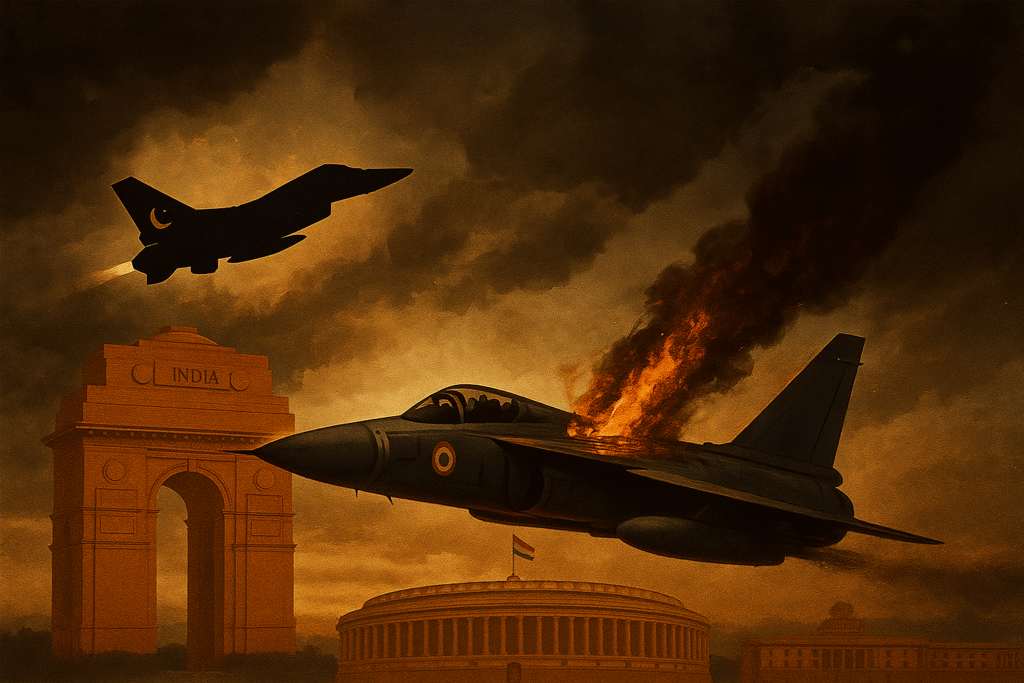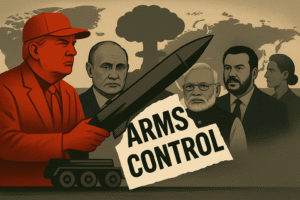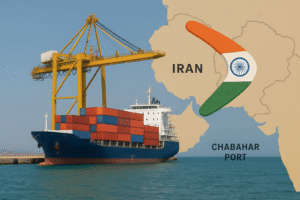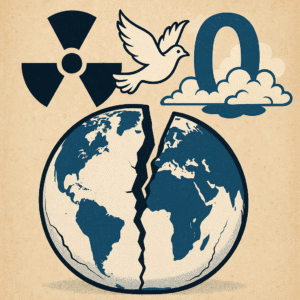New Normal isn’t made in Delhi

Skies Over Delhi: Power, Politics, and the New Geopolitical Normal
The principle of Mutually Assured Destruction (MAD) clearly states that two nuclear-armed states would abstain from going into an all-out war. The idea of deterrence prevails among them; in case of an unwanted action, payoffs will be quite high for that particular state. In conventional war, there is always a winner and a loser, but in the nuclear domain, that’s not the case; there is either survival or annihilation.
South Asian strategic stability is influenced by India’s strategic ambitions and its hegemonic designs. Recent ongoing Indian military modernization and its massive defense acquisitions, may it be drones, stand-off weapons, and air-defense systems, it is creating a false sense of security in the minds of the Indian regime. This is making them pursue destabilizing doctrines under the nuclear shadow. In response to India’s aggressive doctrines and postures, Pakistan’s introduction of Full-Spectrum Deterrence and Tactical Nuclear Weapons has compelled India to reconsider its actions. This has compelled India to go for a Dynamic Response Strategy, which is below the threshold of an all-out war.
On May 12, Indian Prime Minister Narendra Modi stated that Operation Sindoor is India’s policy and has set a new normal. What he meant is, in case of any terrorist attack on Indian soil, it will be met with an assured military response. He also stated that India is no longer going to be deterred by nuclear blackmail; it has both the will and resolve to strike terrorist sanctuaries across the border. Lastly, India is no longer going to differentiate between terrorist organizations and the government that harbors them.
This came right after two days of a ceasefire between India and Pakistan. What Prime Minister Modi stated is a warmongering stance. Right now, there are 36 different separatist groups active across different Indian states. Any attack by one of them against the Indian state will entangle the regime in a commitment trap to respond.
As PM Modi stated that they are not going to be deterred by nuclear blackmail, which is not true. Nuclear Blackmail means to coerce your adversary with the threat of nuclear use. On the contrary, Pakistan’s nuclear arsenal is for defense and deterrence purposes only. In the very first place, it was India’s actions that led Pakistan to attain its own nuclear arsenal. Pakistan’s Full Spectrum Deterrence policy also came in response to India’s Blitzkrieg-style Cold Start Doctrine. In short, Pakistan’s actions are reactive and for its own security and defense.
PM Modi’s stance on equating terrorists with those who harbor them is utterly laughable. Actually, it is the Indian state that has been supporting and fueling terrorism in Pakistan. India’s use of terrorism and proxy warfare is not a new development and is not limited to Pakistan. India resorted to such tactics in the 1970s by supporting Mukti Bahini in East Pakistan and the Liberation Tigers of Tamil Eelam (LTTE) in Srilanka. In 2014, after PM Modi’s inauguration, newly appointed National Security Advisor Ajit Doval gave a speech at Sastra University that is known as the “Doval Doctrine.” In that speech, he hinted at India’s willingness to stir unrest within Pakistan by stating, “You can do one Mumbai, you may lose Balochistan.” He further added that confrontation was not limited to the traditional concept but has expanded towards covert operations and information warfare. And with the Kulbhushan Jadhav acquisition, India’s shadow wars in Pakistan came into light.
May 12 speech by PM Modi is just a publicity stunt to garner domestic support for his political benefits. The New Normal in South Asia is actually contrary to what PM Modi claimed. India’s aerial strike right after the Pulwama and Pahalgam crisis, which PM Modi claimed to be The New Normal, was responded with Pakistan’s Quid Pro Quo Plus (QPQ+) policy. QPQ+ response means that no matter how limited the Indian strike is, it will be met with a response designated to inflict equal or greater pain.
Pakistan’s Operation Swift Retort and Operation Bunyan Um Mursoos are the New Normal, in which Pakistan’s armed forces retaliated by targeting Indian counterforce targets. The actual New Normal is that India could neither justify its aggressive actions nor gather any International support. Kashmir once again has re-emerged as the nuclear flashpoint and has been internationalized by the Trump regime, which needs to be resolved immediately.
To sum it up, unlike PM Modi’s claims of setting the New Normal, it is in actual Pakistan that it has established it with QPQ+ response. Pakistan once again poured cold water on India’s aggressive designs. Indian civil-military leadership must understand that in today’s nuclear environment, war means total annihilation.
Disclaimer: The views expressed in this article are those of the author and do not necessarily reflect the policy or position of the Global Stratagem Insight (GSI).



